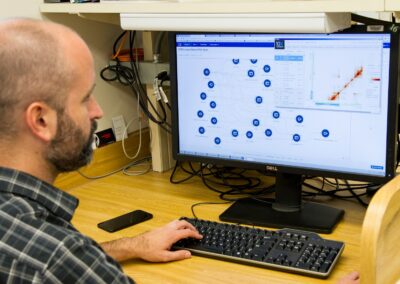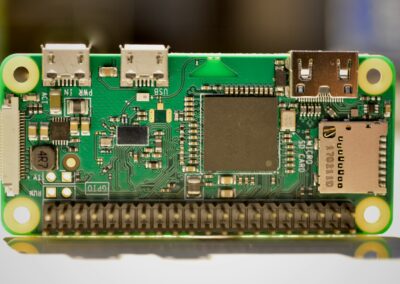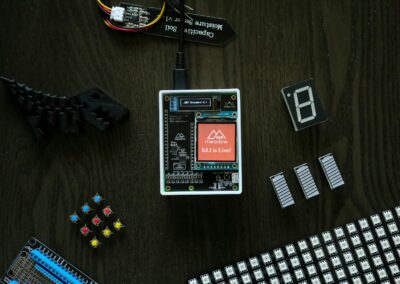The Importance of Modular Design in IoT Systems
Enhancing Flexibility and Integration
In the rapidly evolving landscape of modern technology, designing modular components for IoT systems is crucial for achieving seamless integration and scalability. As cities like Riyadh and Dubai continue to embrace smart technology, the demand for flexible and easily integratable IoT solutions has never been higher. Modular design allows businesses to develop IoT systems that can be easily adapted and expanded as new technologies and requirements emerge. This flexibility is essential for maintaining the relevance and efficiency of IoT deployments in dynamic environments.
Modular components are designed to work independently yet integrate seamlessly within a larger system. This approach ensures that each module can be developed, tested, and updated without disrupting the entire system. For example, a smart city initiative in Dubai may utilize modular IoT components for traffic management, environmental monitoring, and public safety. By designing these modules to integrate seamlessly, city planners can ensure that the overall system remains cohesive and functional, even as individual components evolve.
Facilitating Scalability in IoT Deployments
Scalability is a critical consideration when designing modular components for IoT systems. In regions like Saudi Arabia and the UAE, where large-scale IoT deployments are becoming increasingly common, the ability to scale systems efficiently is paramount. Modular design supports scalability by allowing new components to be added incrementally without requiring significant reengineering of the existing system. This is particularly important for businesses and municipalities that need to expand their IoT networks rapidly in response to growing demands.
For instance, in a smart grid application in Riyadh, modular IoT components can be added to monitor and manage energy consumption across different districts. As the city expands and energy needs increase, additional modules can be integrated to cover new areas, ensuring that the smart grid system can scale effectively. This modular approach not only simplifies the expansion process but also reduces costs and minimizes disruption to ongoing operations.
Ensuring Interoperability and Compatibility
One of the primary challenges in IoT system design is ensuring interoperability and compatibility between different components. Modular design addresses this challenge by promoting the use of standardized interfaces and communication protocols. When designing modular components for IoT systems, it is essential to adhere to industry standards and best practices to ensure that different modules can communicate and work together effectively.
In the UAE, for example, smart building projects often involve integrating various IoT devices from multiple vendors. By designing these devices with modular components that follow standardized protocols, developers can ensure that they are interoperable and compatible. This not only enhances the functionality of the smart building but also provides greater flexibility in choosing and integrating new devices. Additionally, using standardized interfaces simplifies maintenance and updates, as each module can be independently upgraded without affecting the entire system.
Best Practices for Designing Modular IoT Components
Prioritizing Security and Data Privacy
When designing modular components for IoT systems, prioritizing security and data privacy is paramount. In smart cities like Riyadh and Dubai, IoT systems handle vast amounts of sensitive data, from personal information to critical infrastructure details. Ensuring the security of this data is essential for maintaining public trust and compliance with regulatory requirements. Each modular component must be designed with robust security features, including encryption, authentication, and regular updates to address emerging threats.
Incorporating security measures at the design stage helps prevent vulnerabilities that could be exploited by cybercriminals. For example, modular components in a smart healthcare system in Saudi Arabia must be designed to protect patient data and ensure secure communication between medical devices. By embedding security into the design of each module, developers can create a more resilient and secure IoT system.
Implementing Robust Testing and Validation Processes
Robust testing and validation are critical for ensuring the reliability and performance of modular IoT components. When designing modular components for IoT systems, it is essential to implement comprehensive testing procedures that cover functionality, interoperability, and security. This includes both unit testing of individual modules and integration testing to ensure that all components work together seamlessly.
In Dubai’s smart transportation projects, for instance, modular components for traffic monitoring and management must undergo rigorous testing to ensure they can handle real-time data processing and communication. This testing process should include simulations of various scenarios to identify potential issues and ensure that the system can operate effectively under different conditions. By prioritizing testing and validation, developers can deliver high-quality modular components that meet the demands of complex IoT deployments.
Fostering Collaboration and Continuous Improvement
Collaboration and continuous improvement are essential for the successful design and deployment of modular IoT components. Businesses and municipalities in Riyadh, Dubai, and beyond can benefit from fostering a culture of collaboration among developers, engineers, and stakeholders. This collaborative approach ensures that diverse perspectives and expertise are considered, leading to more innovative and effective solutions.
Additionally, continuous improvement practices, such as regular feedback loops and iterative development, help refine and enhance modular components over time. Executive coaching services can play a vital role in guiding leaders on how to foster collaboration and implement continuous improvement strategies. By creating an environment that encourages innovation and ongoing development, organizations can ensure that their IoT systems remain cutting-edge and capable of meeting evolving needs.
Conclusion
The design of modular components for IoT systems is a critical factor in achieving seamless integration and scalability. By focusing on flexibility, scalability, interoperability, security, and continuous improvement, businesses and municipalities in Saudi Arabia, the UAE, and beyond can develop IoT systems that are robust, adaptable, and future-proof. As smart technology continues to advance, modular design will play an increasingly important role in enabling the efficient and effective deployment of IoT solutions. Through strategic planning and collaboration, organizations can harness the full potential of modular IoT components to drive innovation, enhance performance, and achieve lasting success.
—
#IoTSystemDesign #ModularComponents #SeamlessIntegration #Scalability #SaudiArabia #UAE #Riyadh #Dubai #ArtificialIntelligence #Blockchain #TheMetaverse #ExecutiveCoaching #GenerativeAI #ModernTechnology #BusinessSuccess #LeadershipSkills #ProjectManagement































